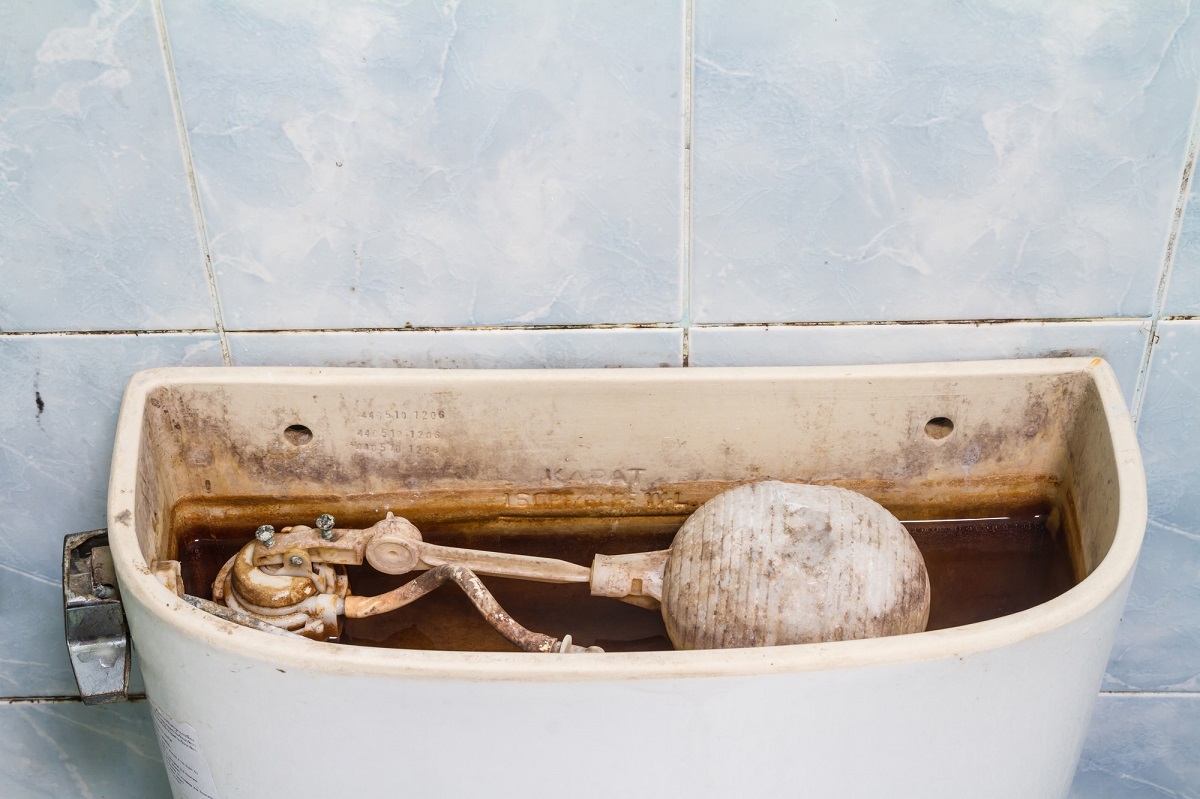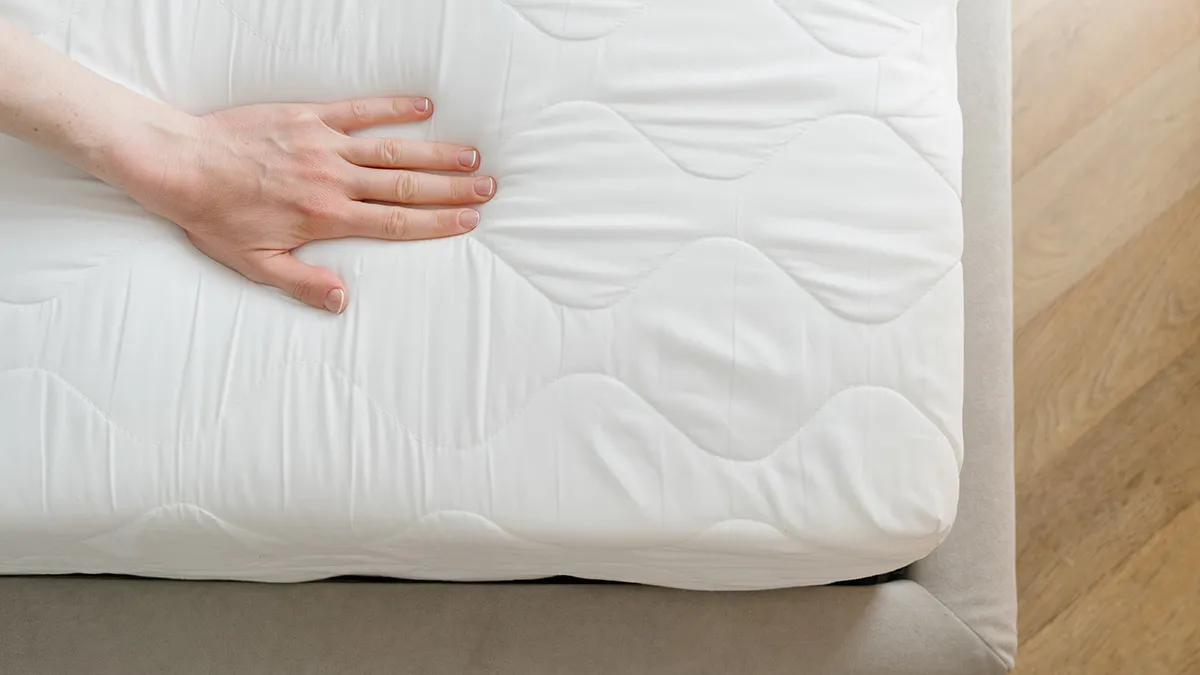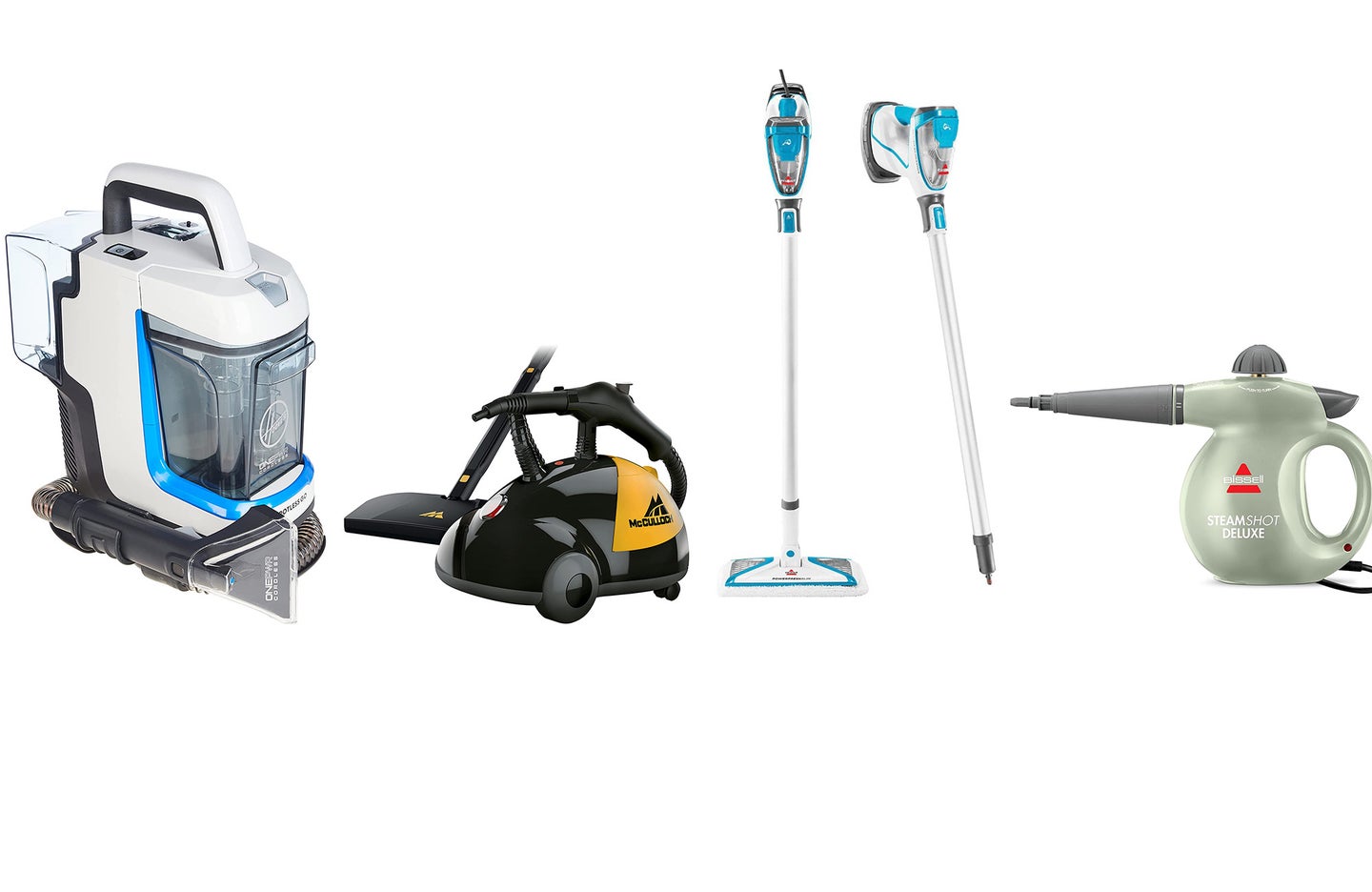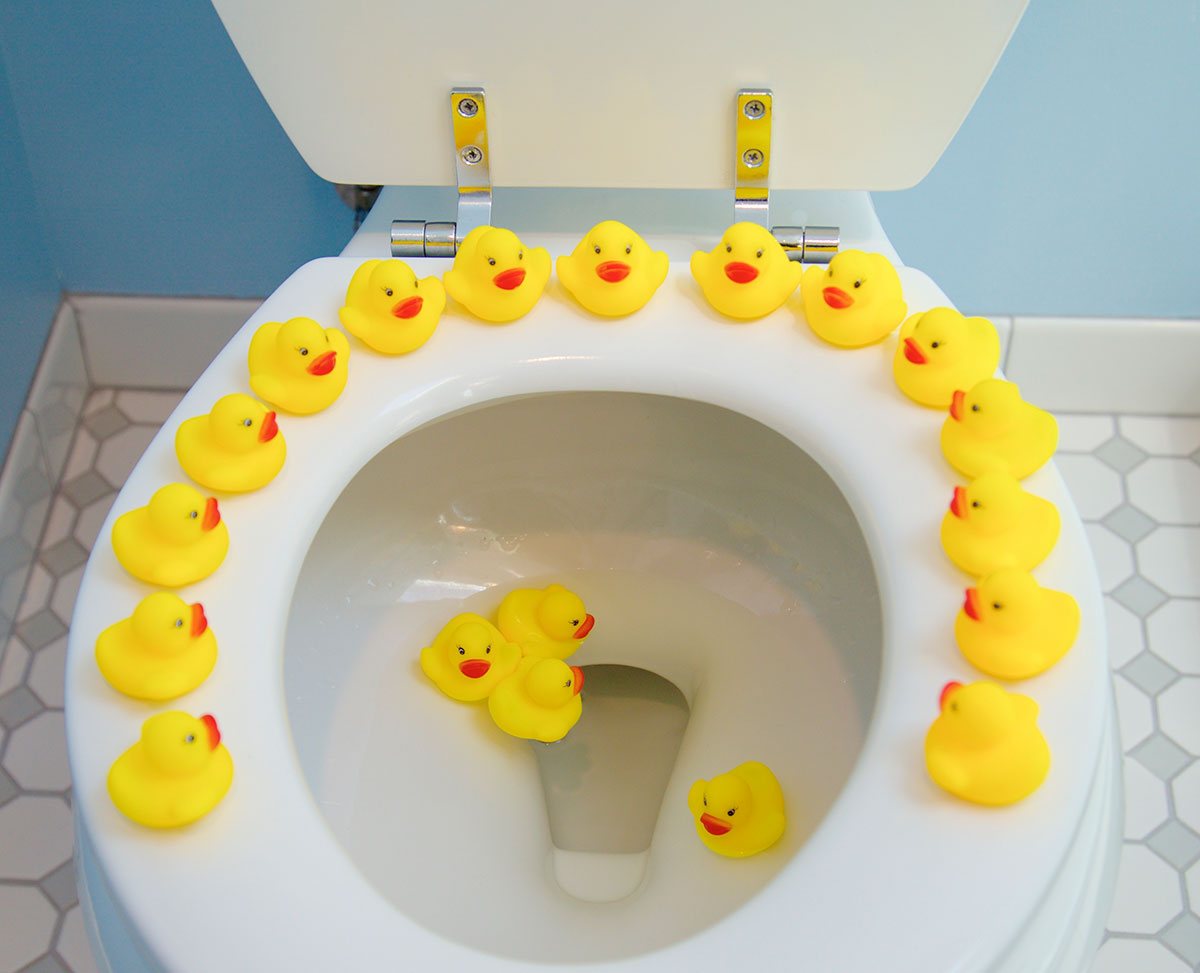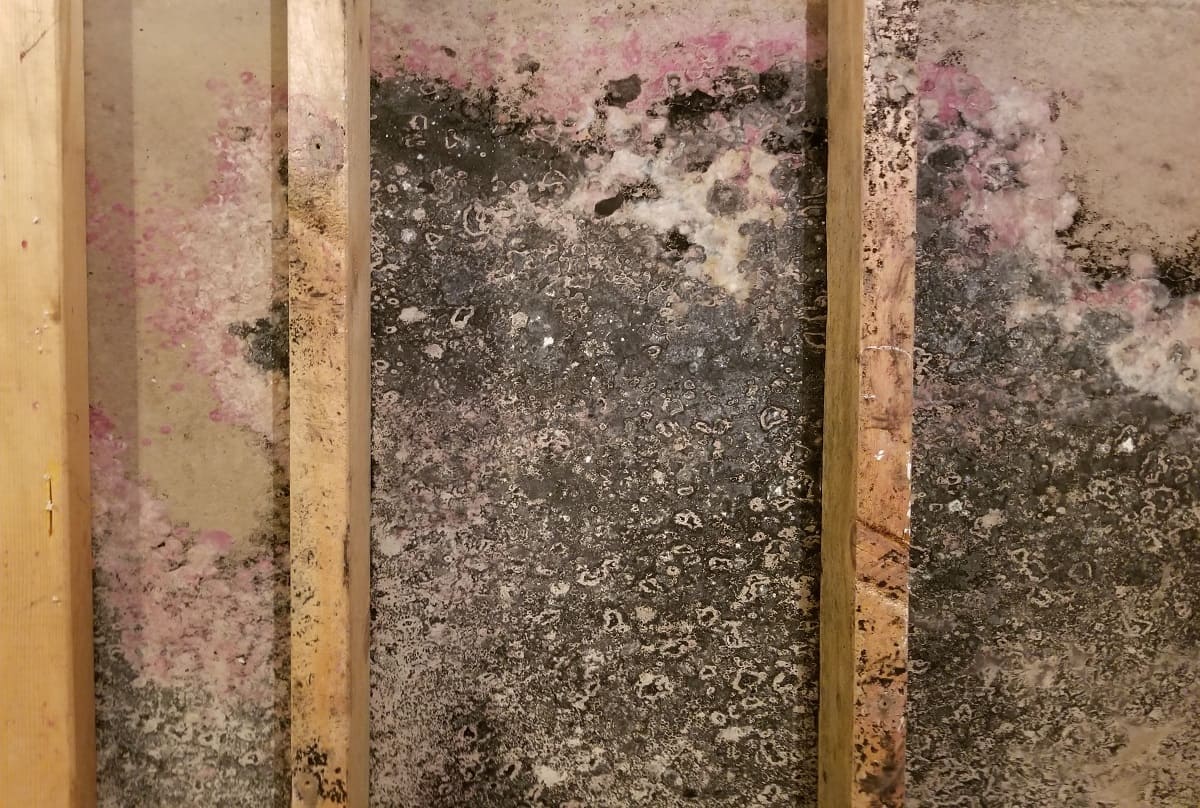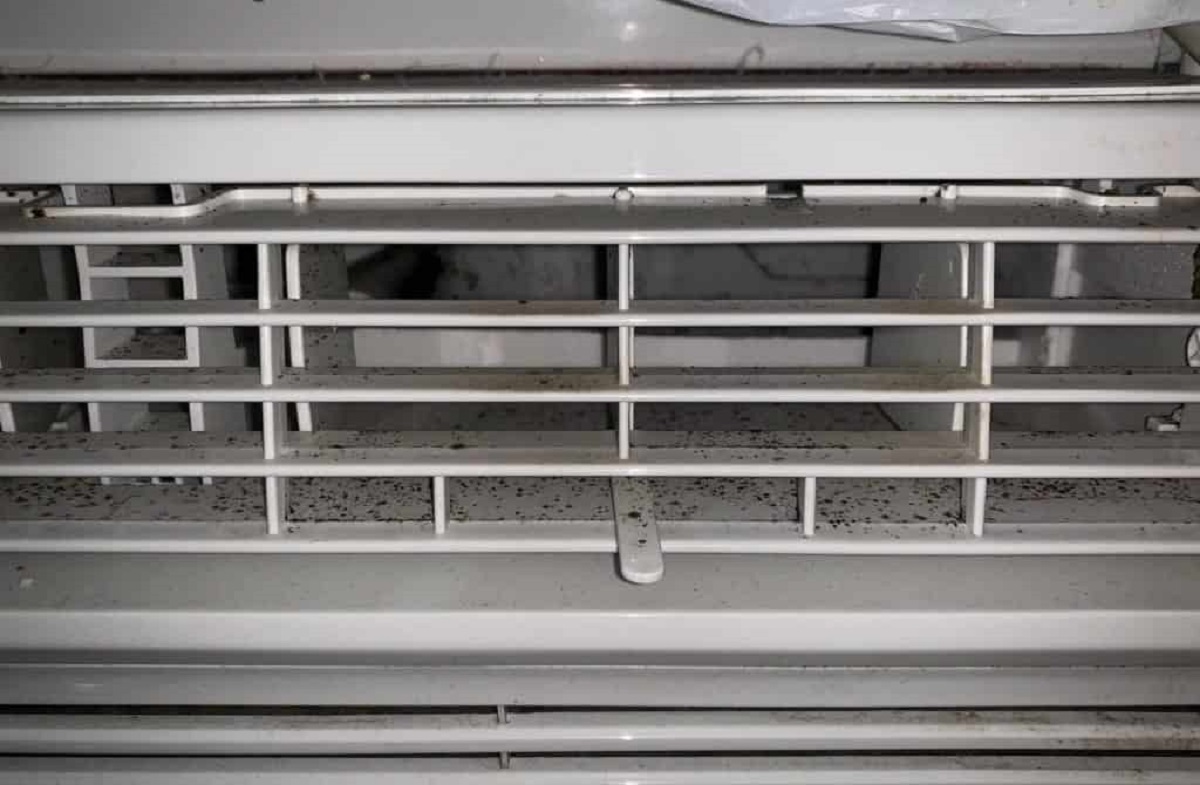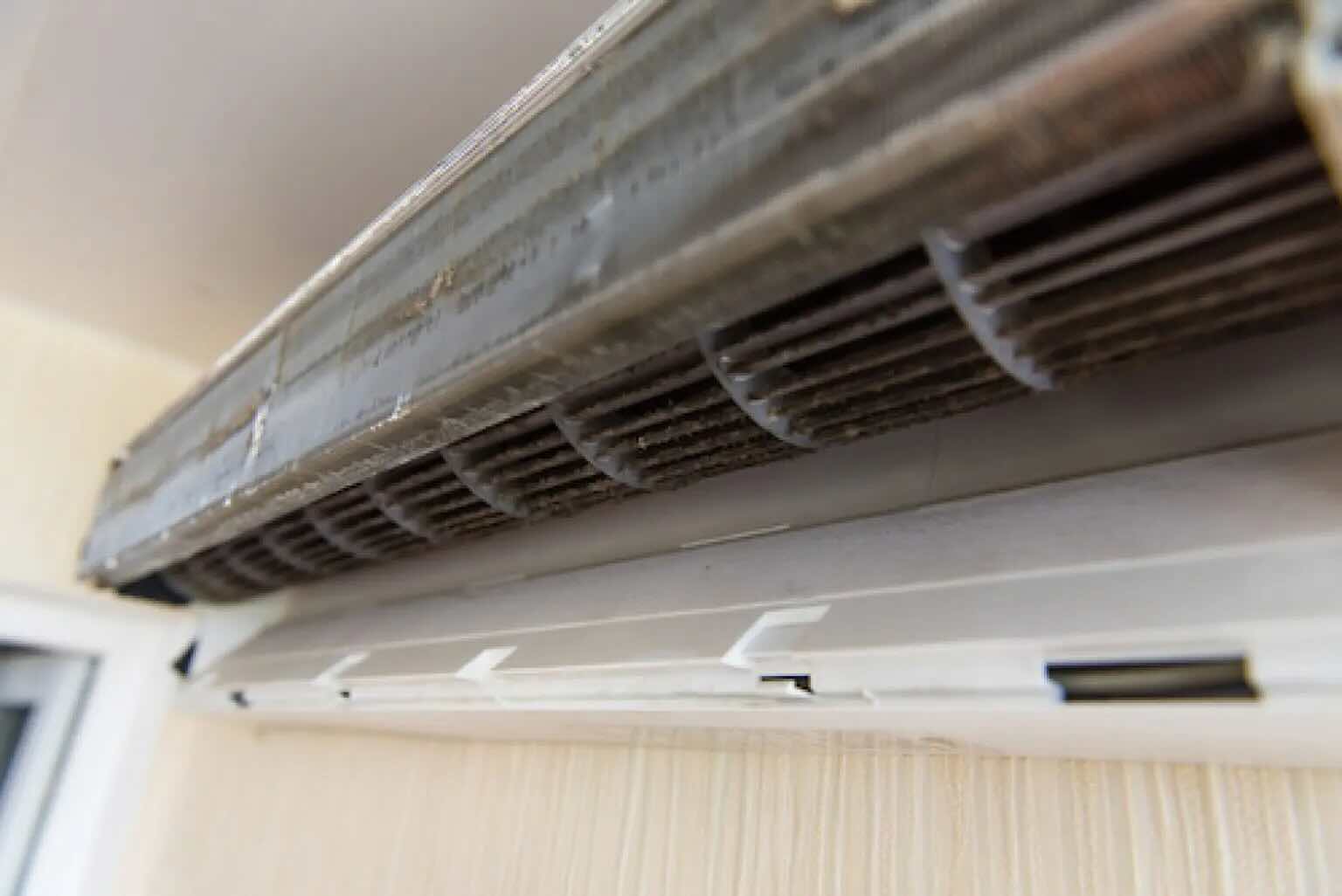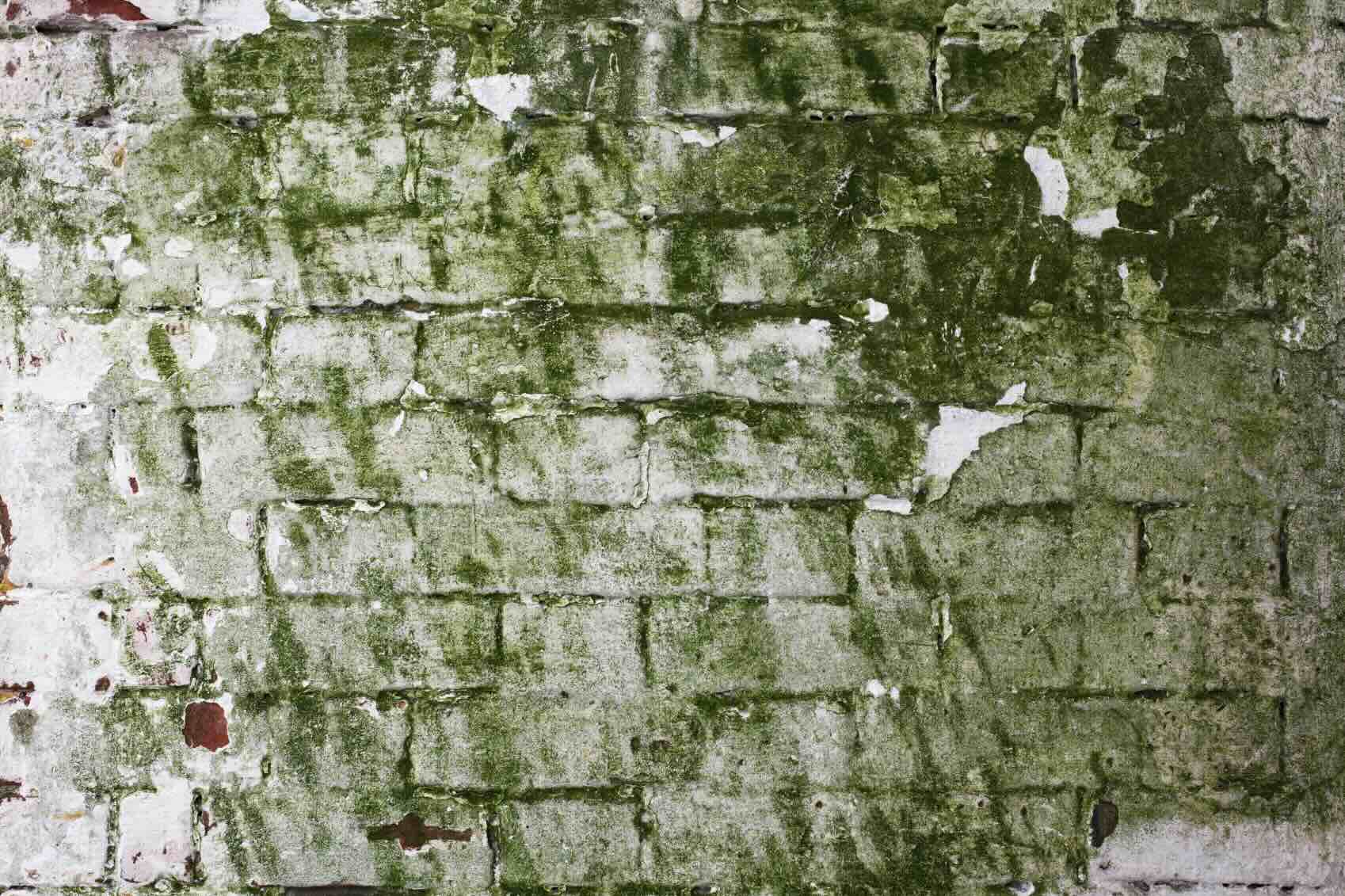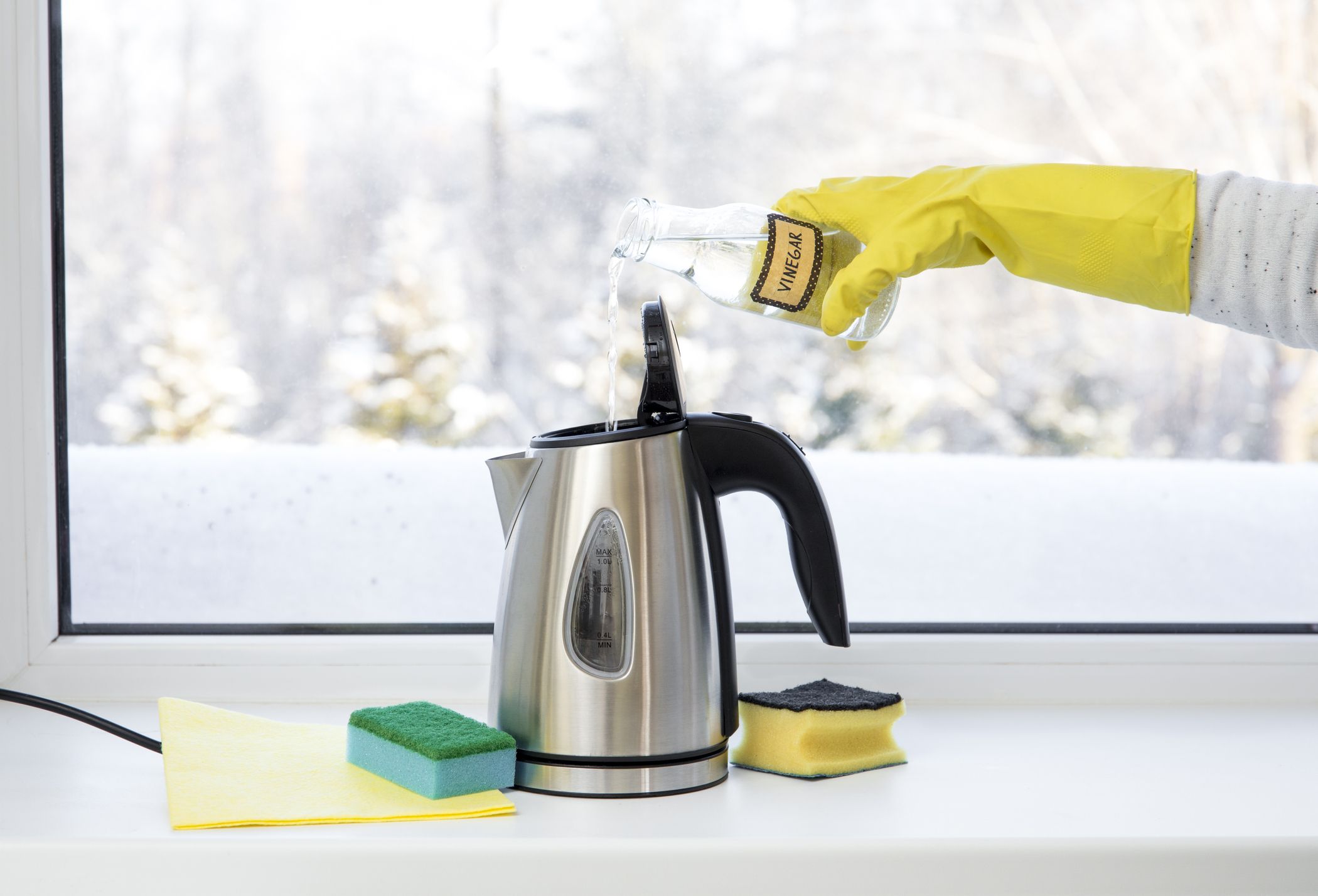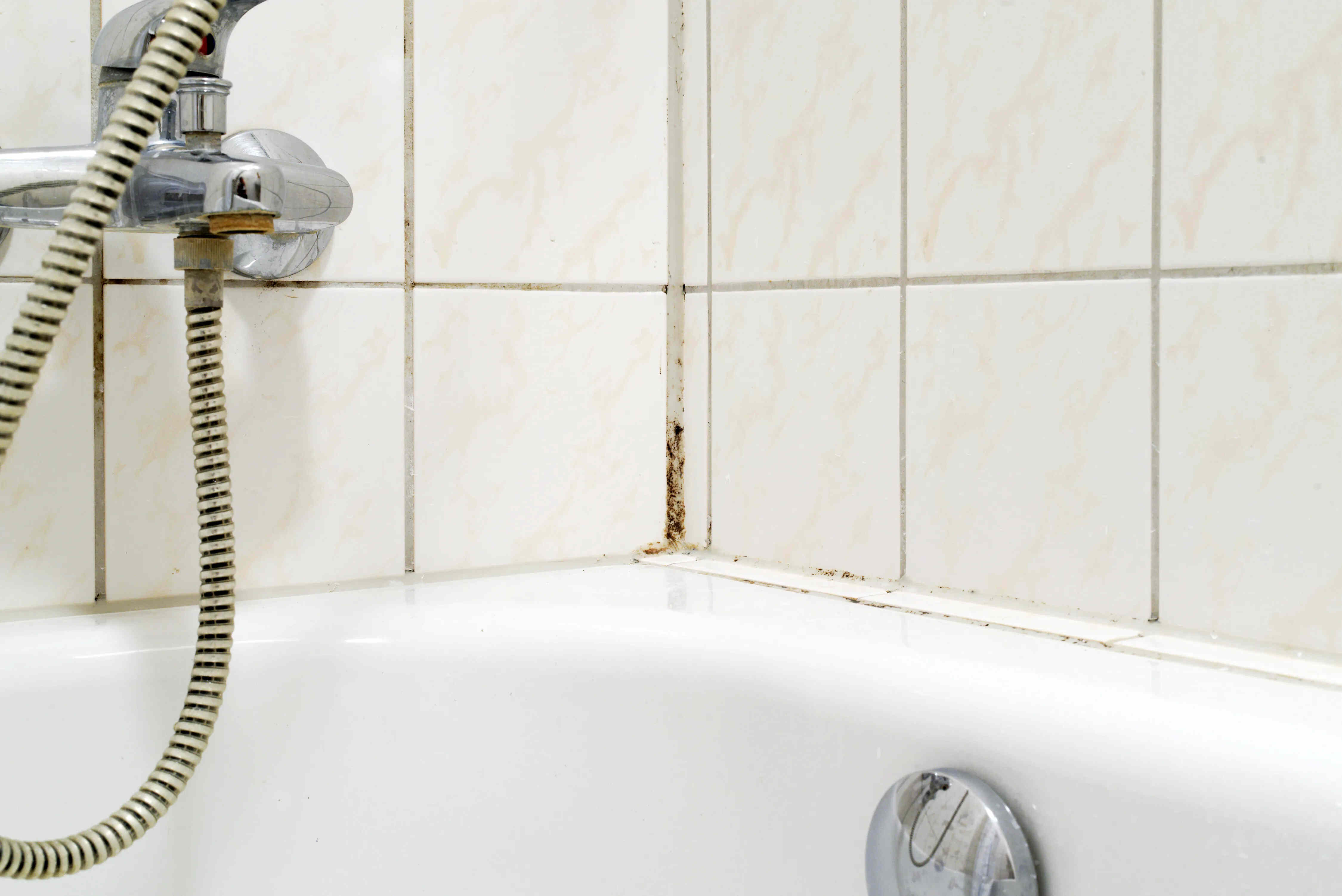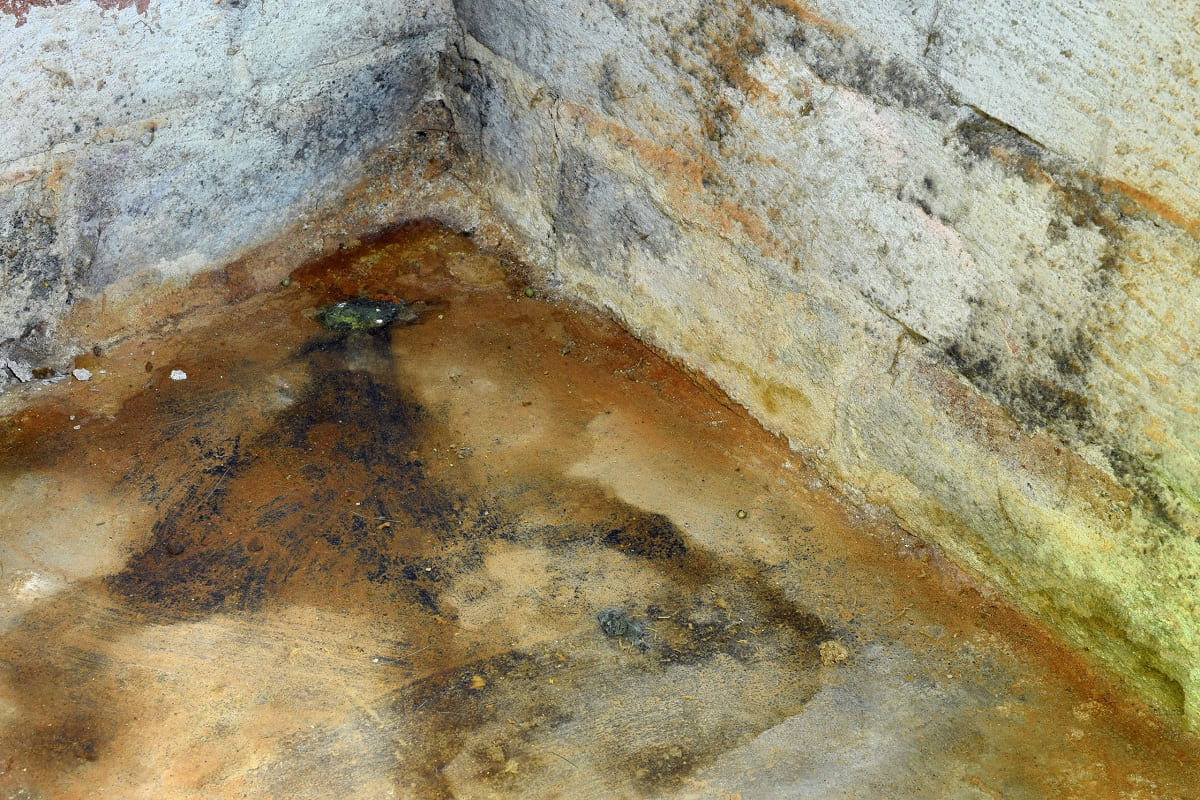Home>Home Maintenance>How To Get Mold Out Of An Air Conditioner
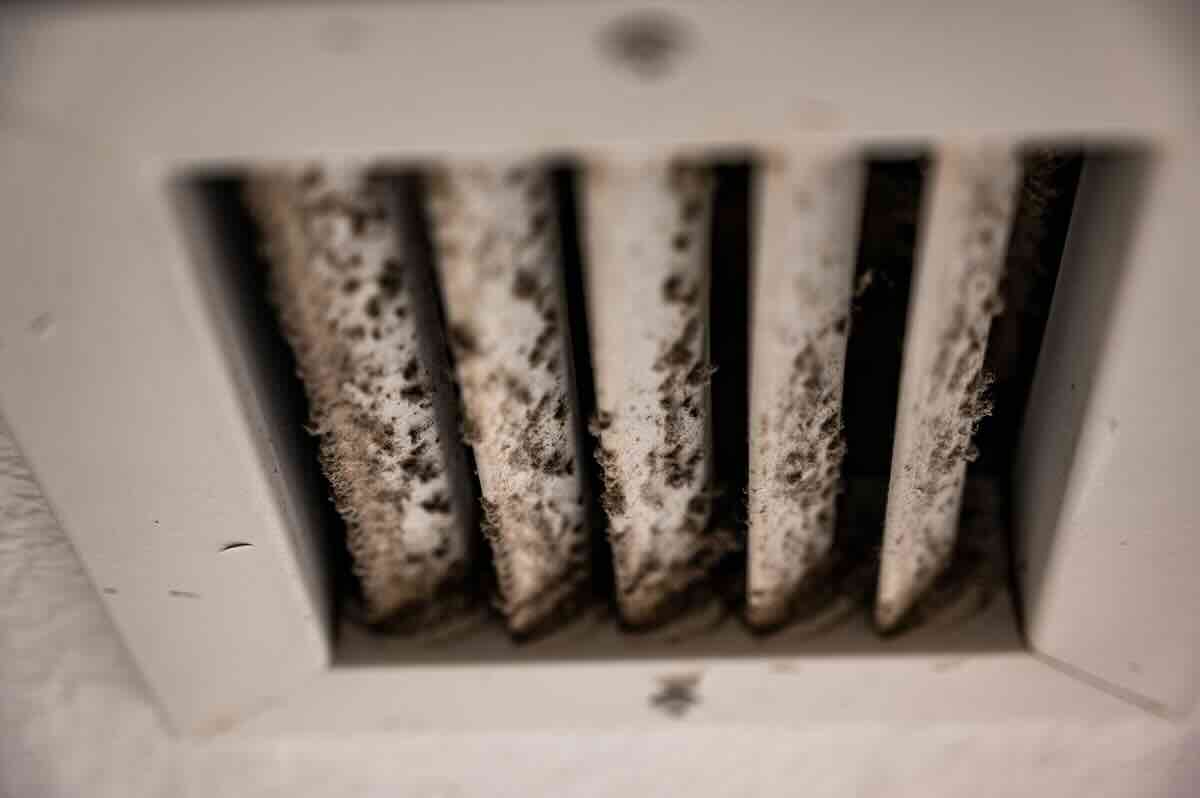

Home Maintenance
How To Get Mold Out Of An Air Conditioner
Modified: March 7, 2024
Learn effective home maintenance tips on how to get rid of mold from your air conditioner and ensure a clean and healthy indoor environment.
(Many of the links in this article redirect to a specific reviewed product. Your purchase of these products through affiliate links helps to generate commission for Storables.com, at no extra cost. Learn more)
Introduction
Welcome to our comprehensive guide on how to get mold out of an air conditioner. Air conditioners are a staple in many homes, providing much-needed relief from the heat and humidity of the summer months. However, with regular use, air conditioners can become breeding grounds for mold and other harmful pollutants. Mold not only poses a risk to your health but can also impact the efficiency and performance of your air conditioner.
In this article, we will explore the signs of mold in an air conditioner, safety precautions to take before removing mold, and the steps you can follow to effectively get rid of mold from your unit. We will also cover important tips for preventing mold growth in air conditioners to ensure that you can enjoy clean and fresh air throughout the year.
Before we dive into the details, it’s important to understand what mold is and why it can be a problem in air conditioning systems.
Key Takeaways:
- Mold in air conditioners can cause health issues and reduce efficiency. Regular cleaning and maintenance, including cleaning coils and filters, are essential to prevent mold growth and ensure clean air.
- Preventing mold in air conditioners involves keeping the area clean, maintaining proper humidity levels, and addressing water leaks. Regular monitoring and maintenance are crucial for a healthy and efficient air conditioning system.
Read more: How To Get Mold Out Of A Hammock
Understanding Mold in Air Conditioners
Mold is a type of fungus that thrives in warm and humid environments. Air conditioners create the perfect conditions for mold growth, as they cool the air by removing moisture. However, if the moisture isn’t properly drained or if there is excess humidity in the air, mold can start to grow inside the unit.
Mold spores can easily find their way into air conditioning systems through open doors, windows, and even on clothing. Once inside, these spores can settle on the moist surfaces of the air conditioner, such as coils, filters, and ducts, and begin to grow and multiply. Over time, mold can spread throughout the unit, compromising the indoor air quality and potentially causing health issues.
Exposure to mold can lead to a variety of health problems, ranging from mild allergic reactions to more severe respiratory issues. Common symptoms of mold exposure include coughing, sneezing, itching, watery eyes, and respiratory distress. Individuals with pre-existing respiratory conditions, such as asthma or allergies, may be especially sensitive to mold and may experience worsened symptoms.
It’s important to note that mold growth in air conditioners is not limited to window units. Central air conditioning systems, especially those with ductwork, are also susceptible to mold infestations. Therefore, it’s crucial to be vigilant and address mold issues promptly to ensure the safety and comfort of your home.
Now that we understand the basics of mold in air conditioners, let’s explore some common signs that indicate the presence of mold in your unit.
Signs of Mold in an Air Conditioner
Identifying the signs of mold in an air conditioner is essential in order to address the issue before it becomes a major problem. Here are some common indicators that your air conditioner may have mold:
- Musty Odor: One of the most prominent signs of mold is a musty or damp smell coming from your air conditioner. If you notice an unpleasant odor when the unit is running, it could be an indication that mold is present.
- Visible Mold: In some cases, you may be able to physically see mold growth on the surfaces of your air conditioner. Check the coils, filters, and ducts for any signs of black, green, or brown patches. If you see visible mold, it’s important to take immediate action to remove it.
- Allergic Reactions: If you or your family members experience an increase in allergy symptoms, such as coughing, sneezing, or itchy eyes, when the air conditioner is being used, it could be due to mold spores circulating in the indoor air.
- Inefficiency and Poor Air Quality: Mold growth can hinder the efficiency and performance of your air conditioner. If you notice that the unit is not cooling the space as effectively as before or if the air quality has deteriorated, mold could be to blame.
- Excess Condensation: Excessive moisture or condensation around the air conditioner unit or in the ductwork can create a favorable environment for mold to thrive. If you notice an increase in moisture levels in and around your air conditioner, it’s important to investigate further for mold growth.
If you come across any of these signs, it’s crucial to take action to remove mold from your air conditioner as soon as possible. Failure to address the issue timely can lead to further mold growth and potential health risks. In the next section, we will discuss some essential safety precautions to keep in mind before attempting to remove mold from your unit.
Safety Precautions before Removing Mold
Before you start the process of removing mold from your air conditioner, it’s important to take certain safety precautions to minimize the risk of exposure and ensure your well-being. Here are some essential safety measures to keep in mind:
- Turn off the Power: Before you begin any maintenance or cleaning tasks on your air conditioner, make sure to turn off the power supply. This will prevent any electrical accidents or injuries during the process.
- Wear Protective Gear: Mold can release spores into the air that can be harmful if inhaled or come into contact with your skin. Wear protective gear, such as gloves, goggles, and a mask, to protect yourself from mold exposure. Additionally, wear appropriate clothing that covers your arms and legs to avoid direct contact with the mold.
- Provide Adequate Ventilation: Open windows and doors in the area where you will be working to ensure proper ventilation. This will help to dissipate any mold spores that may be released during the cleaning process.
- Use Non-Toxic Cleaning Products: Choose non-toxic cleaning products specifically designed for mold removal. Avoid using harsh chemicals that can further compromise the air quality or damage the components of your air conditioner. Look for products that are labeled as safe for HVAC systems.
- Read and Follow Instructions: Always read the instructions provided by the manufacturer of the cleaning products and follow them carefully. This will ensure that you are using them correctly and safely.
- Dispose of Moldy Materials Properly: When removing moldy materials such as filters or insulation, dispose of them properly to prevent further contamination. Seal them in plastic bags before disposal to minimize the spread of mold spores.
- Consider Professional Help: If you have a severe mold infestation in your air conditioner or if you are unsure about the cleaning process, it’s best to consult with a professional HVAC technician who specializes in mold remediation. They have the expertise and equipment to safely remove mold from your unit.
By following these safety precautions, you can minimize the risk of exposure to mold and ensure a safe and effective cleaning process. In the next section, we will outline the steps to get mold out of an air conditioner.
Steps to Get Mold Out of an Air Conditioner
Removing mold from an air conditioner requires a systematic approach to ensure thorough cleaning and prevent regrowth. Follow these steps to effectively get mold out of your unit:
- Gather the necessary tools: Before you begin, gather the tools you will need, including gloves, goggles, a mask, a vacuum cleaner with a HEPA filter, a soft brush or cloth, a non-toxic mold cleaner, a bucket of water, and a clean towel.
- Turn off the power: Make sure to turn off the power to your air conditioner before starting the cleaning process. This will prevent any electrical accidents.
- Clean the coils: Start by cleaning the coils, as these are often a common breeding ground for mold. Using a soft brush or cloth, gently remove any visible mold growth on the coils. Be careful not to damage the fins or bend the coils. Once you have removed the mold, wipe the coils with a non-toxic mold cleaner and water solution.
- Clean the air ducts: If you suspect mold in the air ducts, you can use a vacuum cleaner with a HEPA filter to remove any loose mold spores. You may also consider hiring a professional duct cleaning service for a more thorough cleaning.
- Clean or replace the filters: Remove the air filters from your air conditioner and check for any mold growth. If the filters are reusable, clean them according to the manufacturer’s instructions using a mild soap and water solution. If the filters are heavily contaminated with mold or damaged, it’s best to replace them with new ones.
- Disinfect the drain pan and drain line: Mold can also accumulate in the drain pan and drain line of your air conditioner. Use a mixture of bleach and water to disinfect these components. Be sure to follow safety guidelines and use protective gear when handling bleach.
- Allow for thorough drying: After cleaning, ensure that all components of your air conditioner are completely dry before turning it back on. Moisture can contribute to mold growth, so it’s important to allow sufficient time for drying.
- Maintain regular cleaning and maintenance: To prevent future mold growth, it’s essential to maintain regular cleaning and maintenance of your air conditioner. This includes cleaning or replacing the filters regularly and ensuring adequate drainage of moisture from the unit.
By following these steps carefully and taking the necessary precautions, you can effectively remove mold from your air conditioner and restore clean and healthy airflow. However, it’s important to implement preventive measures to minimize the chances of mold regrowth, which we will discuss in the next section.
Regularly clean and replace the air filters in your air conditioner to prevent mold growth. Use a mixture of water and vinegar to clean the coils and other components to remove any existing mold.
Read more: How To Get Mold Out Of Tablecloths
Cleaning the Air Conditioner Coils
The coils in your air conditioner are one of the key areas where mold can thrive. Therefore, cleaning them thoroughly is essential for removing mold and maintaining the efficiency of your unit. Follow these steps to clean the air conditioner coils:
- Turn off the power: Before you begin, ensure that the power to your air conditioner is turned off. This will prevent any electrical accidents during the cleaning process.
- Access the coils: Depending on the type of air conditioner you have, you may need to remove a panel or access cover to gain access to the coils. Refer to your air conditioner’s manual for specific instructions on how to do this.
- Inspect for mold: Carefully examine the coils for any signs of mold growth. Look for black, green, or brown patches on the coils. If you see visible mold, take note of its location for targeted cleaning.
- Mix a cleaning solution: Prepare a cleaning solution by mixing a non-toxic mold cleaner with water as per the manufacturer’s instructions. Avoid using harsh chemicals that can damage the coils or impact indoor air quality. Choose a cleaner specifically designed for air conditioner coils.
- Clean the coils: Using a soft brush or cloth, gently remove any loose dirt or debris from the coils. Then, apply the cleaning solution to the coils, focusing on areas with visible mold growth. Be sure to follow the instructions provided by the manufacturer of the cleaning solution.
- Allow the solution to work: Let the cleaning solution sit on the coils for a few minutes to effectively break down and kill the mold. This will help ensure a thorough cleaning process.
- Rinse the coils: After allowing the cleaning solution to work its magic, rinse the coils with clean water. You can use a spray bottle or a hose to rinse off the solution. Make sure to remove all traces of the cleaning solution.
- Allow for thorough drying: Once you have rinsed the coils, allow them to dry completely before reassembling the unit. Moisture can contribute to mold growth, so it’s crucial to ensure that the coils are properly dried.
- Reassemble the unit: Once the coils are fully dry, reassemble the air conditioner by replacing any covers or panels that were removed earlier. Ensure that everything is securely in place before turning the power back on.
Regular cleaning of the air conditioner coils is essential to prevent mold growth and maintain the efficiency of your unit. By following these steps and using appropriate cleaning solutions, you can effectively remove mold from the coils and ensure clean and fresh airflow in your home.
Removing Mold from the Air Ducts
If you suspect mold growth in the air ducts of your air conditioner, it’s important to address it promptly to prevent the spread of mold spores and maintain good indoor air quality. Here are the steps to remove mold from the air ducts:
- Turn off the power: Start by turning off the power supply to your air conditioner. This will ensure your safety during the cleaning process.
- Access the air ducts: Locate the access points to the air ducts. These are usually small openings or vents on the walls or ceilings of your home. Remove the covers or grilles to gain access to the ductwork.
- Inspect the ducts for mold: Use a flashlight to inspect the inside of the ducts for any visible signs of mold growth. Look for black, green, or brown patches on the inner surfaces of the ductwork. Take note of the areas that require targeted cleaning.
- Vacuum the loose mold: Use a vacuum cleaner with a high-efficiency particulate air (HEPA) filter to remove loose mold spores from the ducts. Move the vacuum hose along the interior of the ducts, paying extra attention to the areas with visible mold. This will help to eliminate existing mold and prevent it from spreading during the cleaning process.
- Clean the ducts: After vacuuming, use a non-toxic mold cleaner specifically designed for air ducts. Follow the instructions provided by the manufacturer to mix and dilute the cleaner. Apply the cleaning solution to a brush or cloth, and use it to gently scrub the moldy areas inside the ducts. Be thorough but careful not to damage the ductwork.
- Rinse or wipe away the cleaner: After scrubbing, either rinse the ducts with clean water using a spray bottle or wipe away the cleaner with a damp cloth. Make sure to remove all traces of the cleaning solution and leave the ducts clean and free from any residual mold or cleaner.
- Allow for drying: To prevent mold growth in the ducts, ensure that they are completely dry before closing them back up. Use fans or natural airflow to aid in the drying process. Moisture within the ducts can lead to future mold growth, so it’s essential to allow sufficient time for drying.
- Replace covers and grilles: Once the ducts are dry, replace the covers or grilles securely. Ensure they are properly aligned and fastened to prevent air leaks or contamination.
It’s worth noting that cleaning the air ducts can be a challenging task, especially if you have extensive or complex ductwork. In such cases, it may be preferable to hire a professional duct cleaning service to ensure thorough and effective mold removal.
By following these steps, you can successfully remove mold from your air ducts and maintain clean and healthy airflow in your home. Regular maintenance and cleaning of the air ducts can help prevent mold growth and improve the overall indoor air quality.
Cleaning Moldy Air Filters
Air filters are an essential component of an air conditioner, as they help trap dust, allergens, and other pollutants to improve indoor air quality. However, when air filters become moldy, they can actually contribute to poor air quality. It’s important to clean or replace moldy air filters to ensure clean and fresh airflow. Here’s how to clean moldy air filters:
- Turn off the power: Before you begin, turn off the power to your air conditioner. This will prevent any electrical accidents during the cleaning process.
- Remove the air filters: Locate the air filters in your air conditioner and carefully remove them. Refer to your unit’s manual for specific instructions on how to do this.
- Inspect the filters for mold: Examine the air filters for any signs of mold growth. Look for black or brown spots, discoloration, or a musty odor. If you see visible mold on the filters, they will need thorough cleaning or replacement.
- Vacuum loose debris: Use a vacuum cleaner with a brush attachment to gently remove any loose debris, dust, or mold spores from the air filters. This will help eliminate any loose contaminants before the cleaning process.
- Clean the filters with soap and water solution: Fill a basin or sink with warm water and add a mild detergent or soap. Submerge the air filters in the soapy water and use a soft brush to gently scrub away the mold. Pay extra attention to areas with visible mold growth. Avoid using harsh chemicals that can damage the filters or impact indoor air quality.
- Rinse the filters thoroughly: After scrubbing, rinse the air filters under clean, running water to remove all traces of soap and mold. Ensure that all the soap suds are washed away. Rinse from the cleanest to the dirtiest side of the filters to prevent pushing debris further into the filter material.
- Allow for drying: Properly dry the air filters before reinstalling them. Gently shake off excess water, then let the filters air dry in a well-ventilated area. Avoid exposing them to direct sunlight or extreme heat, as this can cause damage to the filter material.
- Reinstall the filters: Once the filters are completely dry, reinstall them in the air conditioner. Make sure they are positioned correctly and securely in the designated slots. Ensure that any filter retaining clips or covers are properly fastened.
- Maintain regular filter cleaning or replacement: To prevent mold growth in the air filters, it’s important to clean or replace them regularly. Follow the manufacturer’s recommendations for the specific type of filters you have. Some filters can be cleaned and reused, while others may need to be replaced entirely.
By cleaning moldy air filters, you can improve the efficiency of your air conditioner and maintain healthy indoor air quality. Regular maintenance and cleaning of the filters are crucial to prevent mold growth and ensure optimal performance of your air conditioning system.
Preventing Mold Growth in Air Conditioners
Preventing mold growth in air conditioners is key to maintaining a clean and healthy indoor environment. By following these preventive measures, you can reduce the risk of mold infestation and ensure that your air conditioner operates efficiently:
- Keep the area around the air conditioner clean: Regularly clean the area surrounding your air conditioner to prevent the accumulation of dirt, dust, and debris. This will help minimize the potential for mold spores to enter the unit.
- Maintain proper humidity levels: Mold thrives in humid environments, so it’s important to control the humidity levels in your home. Use a dehumidifier, especially in high moisture areas such as basements, to reduce excess humidity. Ideally, aim for humidity levels between 30% and 50% to discourage mold growth.
- Promote good airflow: Ensure proper airflow throughout your home by keeping doors and windows open for ventilation. This helps to improve air circulation and prevent moisture buildup. Additionally, make sure that furniture or other objects are not blocking the airflow around the air conditioner unit.
- Regularly clean and maintain the air conditioner: Follow the manufacturer’s instructions for regular cleaning and maintenance of your air conditioner. Clean or replace the air filters as recommended, as dirty filters can trap moisture and debris, providing an ideal environment for mold growth. Keep the coils and other components clean and free from dust and debris.
- Address water leaks immediately: Any water leaks near or in your air conditioner should be addressed promptly. Water leakage can lead to excess moisture, which creates the perfect conditions for mold growth. Inspect your air conditioner regularly for any signs of water leaks and have them repaired as soon as possible.
- Insulate air ducts: Properly insulate air ducts to prevent condensation and moisture buildup. Insulation helps to keep the ductwork at a consistent temperature, reducing the chances of mold growth. If you notice any signs of condensation on the ducts, insulate them to prevent further issues.
- Ensure proper drainage: Make sure that your air conditioner’s condensate drain line is clear and allows for proper drainage. Check the drain line regularly to ensure that there are no obstructions or clogs. Clear away any standing water near the unit to prevent mold growth.
- Utilize UV lights or air purifiers: Consider installing ultraviolet (UV) lights or air purifiers in your air conditioner to help kill mold spores and other bacteria. These devices can be effective in reducing the risk of mold growth and improving indoor air quality.
- Monitor for mold regularly: Keep an eye out for any signs of mold growth in and around your air conditioner. Regularly inspect the unit, coils, filters, and ducts for any visible signs of mold. If you detect mold, take immediate action to remove it following the appropriate cleaning techniques.
By implementing these preventive measures, you can minimize the risk of mold growth in your air conditioner and ensure a healthy and comfortable living environment. Regular maintenance and vigilance are key to preventing mold and maintaining the efficiency and reliability of your air conditioning system.
Read more: How To Get Mold Out Of Couch Cushions
Conclusion
Mold growth in air conditioners can pose a threat to both your health and the performance of your unit. It’s essential to stay proactive in preventing and addressing mold issues to maintain clean and fresh airflow in your home. By understanding the signs of mold, taking safety precautions, and following the steps to remove mold from your air conditioner, you can effectively tackle mold infestations and ensure a healthy indoor environment.
Regular maintenance, such as cleaning the air conditioner coils, removing mold from the air ducts, and cleaning moldy air filters, is crucial in preventing mold growth and maintaining the efficiency of your air conditioning system. Proper cleaning techniques, using non-toxic solutions and appropriate protective gear, will ensure that you eradicate mold effectively and safely.
In addition to cleaning, it’s important to implement preventive measures to minimize the chances of mold regrowth. Keeping the area around the air conditioner clean, maintaining proper humidity levels, promoting good airflow, addressing water leaks, insulating air ducts, and utilizing UV lights or air purifiers are important steps to prevent mold growth in the future.
Regular monitoring and maintenance of your air conditioner will go a long way in preventing mold and ensuring optimal performance. Remember to consult with a professional HVAC technician if you have a severe mold infestation or if you are unsure about the cleaning process.
By being proactive in mold prevention and maintenance, you can enjoy clean and fresh airflow from your air conditioner and create a healthy environment for you and your family. Regular cleaning and upkeep is the key to a reliable and efficient air conditioning system that keeps you cool and comfortable for years to come.
Frequently Asked Questions about How To Get Mold Out Of An Air Conditioner
Was this page helpful?
At Storables.com, we guarantee accurate and reliable information. Our content, validated by Expert Board Contributors, is crafted following stringent Editorial Policies. We're committed to providing you with well-researched, expert-backed insights for all your informational needs.
